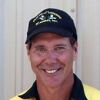There are a few different philosophies about shooting stance and technique in gunfight training. One is the idea that “there is no stance in a gunfight; you are running, moving, ducking, avoiding, etc., and you don’t have time to assume one.”
Another is “do whatever comes natural to you” — there won’t be time to assume any sort of position. Say what?
When an idea or belief jeopardizes officer safety, prevents someone from doing their job effectively or puts them on the wrong fork in the road, I feel I have a duty to comment. This is one of those situations.
Reactive Shooting Science
When driving your vehicle — on road or off, high speed or not — most people will agree that the suspension of your car matters. Similarly, how your tires interact with the road surface and create friction is also important. We recognize from our personal experiences and from the experience of others that suspension and tires matter.
In shooting, your platform is your suspension and your grip is the tires on your car. If you wish to be an efficient shooter, then you need to learn more about driving the gun.
Three Forces at Work
There are three major physical forces at work when shooting: gravity, momentum, and recoil energy.
Gravity is a constant. Regardless of whether you are standing still, running, dodging, ducking or weaving , gravity is working on you – no matter how stressful the situation.
When you are moving, up, down, forward, backwards and/or sideways, momentum comes into play.
Recoil energy comes into play when firing the weapon.
The fact that you may not be aware of these forces doesn’t mean you aren’t affected by them. How you interact with these forces will determine how efficient you will be and, ultimately, how well you can shoot — in a gunfight or otherwise.
Stance or Platform
Learning how to gunfight means starting with the basics and working from there. If you can’t hit well standing still, then things aren’t likely to improve when you “go dynamic.”
A stance is simply a position. Standing, kneeling, prone, sitting, squatting, or whatever you do all qualify. Take that position and start moving and it becomes a platform. All the above forces are at work on you when you shoot.
A skilled hand-to-hand fighter can punch, kick, throw, or manipulate an opponent from almost any position he finds himself in. While it may seem that he has no stance when things are fast and furious, a closer examination shows that he is using his position, leverage, momentum and balance and putting his center of gravity to good use to control his delivery of attack.
Similarly, a skilled shooter learns to use position, placement of the center of gravity, and specificity of effort to hit precisely and rapidly under all conditions and positions. Adapt this to the gunfight environment, and you have a very capable fighter.
Too many people argue that foot placement doesn’t matter, or that you’ll be moving therefore there is no stance. It’s time to put that one to bed forever.
It’s not where you put your feet; it’s where you put your balance and center of gravity and how you manage recoil energy. If you are not effectively able to manage this energy, you will not shoot well.
Years ago, I wrote about what I termed the “natural action stance.” Using a simple tennis ball, we showed how the human body will position in a certain posture when preparing for action. By observing thousands of people engaged in complex tasks — be it shooting, martial arts, sports, etc., and studying the physics, biomechanics and other aspects of the platform used by them — we were able to understand better why we do things the way we do and apply this to reactive shooting.
The Bottom Line
Does the shooting stance or platform exist, and does it matter? I believe it does. Like your car, the better the suspension and the tires, the better performance you will have.
Being able to avoid attack, rapidly counterattack, gain or close distance, change positions or levels, go up or down stairs, or simply deliver good hits fast all require a proper suspension.
Racing cars or high speed pursuit driving both call for a higher level of knowledge, skill, training and experience in order to be successful.
Reactive shooting at the speed of a gunfight also calls for a higher level of education and training than qualification training.
The shooting platform is not a basic skill. It is an integral part of any lethal force encounter involving a firearm. Understanding and using it efficiently is an essential part of lethal force training.


